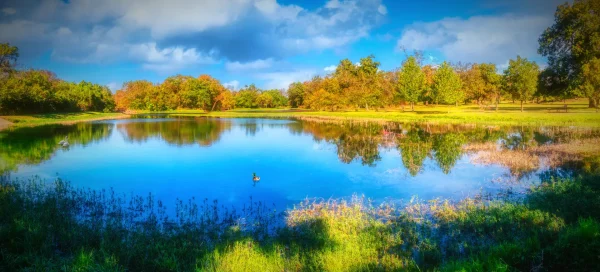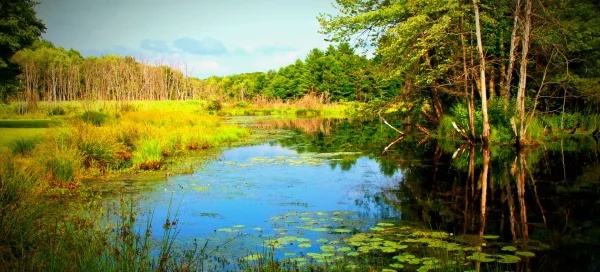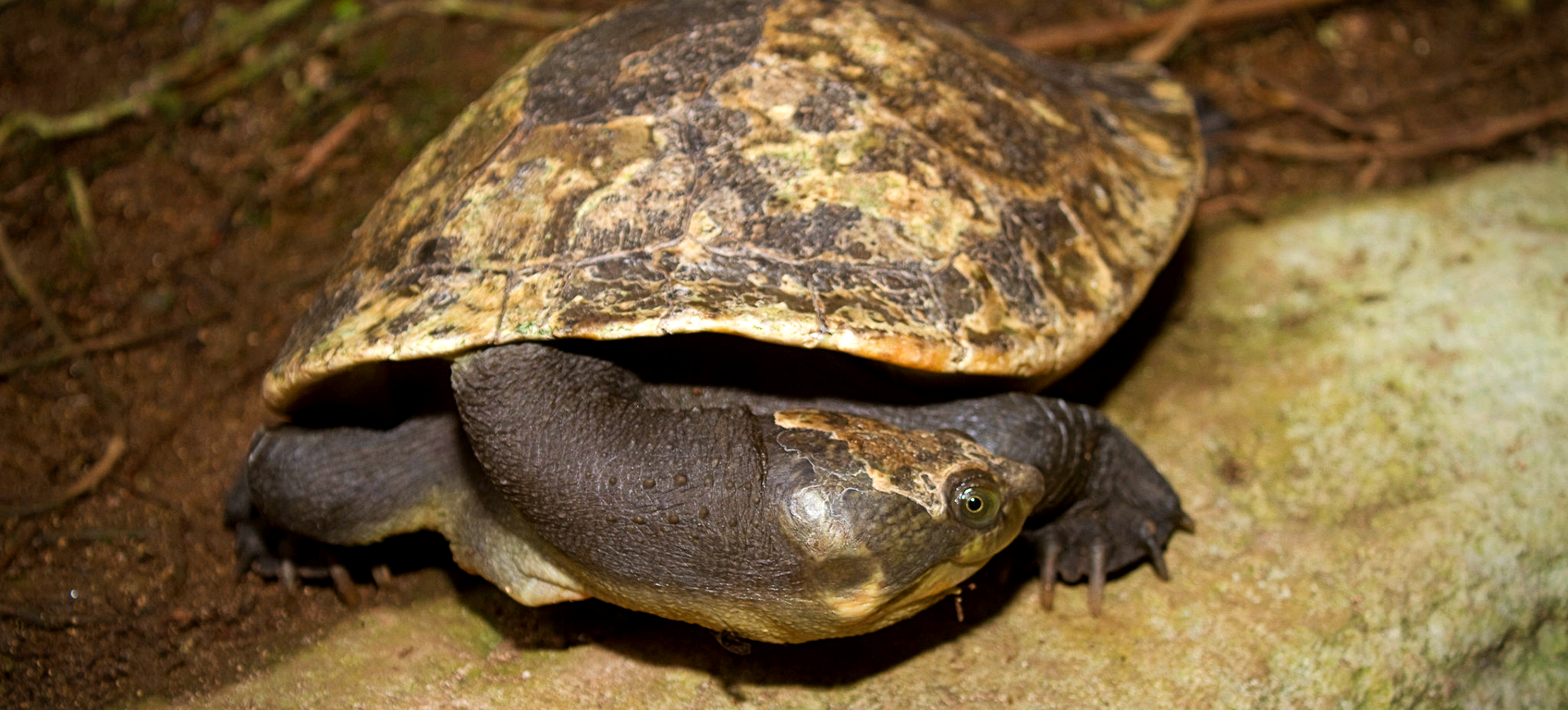Overview
The Red-bellied Short-necked Turtle, scientifically known as Emydura subglobosa, is a small to medium-sized freshwater turtle native to Australia and Papua New Guinea. It is characterized by its distinctive red plastron (the underside of the shell) and a relatively short neck compared to other turtle species. This species belongs to the family Chelidae, commonly known as the side-necked turtles due to their unique way of retracting their neck sideways into their shell. They are highly aquatic but are also known to bask in the sun on logs or rocks near water bodies.
The Red-bellied Short-necked Turtle’s carapace is usually dark brown or black, strikingly contrasting its bright red or orange plastron. Juveniles often exhibit more vibrant colors than adults, and the intensity of the plastron color can fade as they age. These turtles are known for their hardy nature and adaptability to various freshwater environments, making them a popular choice among turtle enthusiasts.
In the wild, these turtles are often found in rivers, lakes, and swamps, playing a crucial role in the ecosystem. They are omnivorous, feeding on various aquatic plants, fruits, insects, and small fish. Their diet reflects their role in controlling aquatic prey populations and dispersing seeds of aquatic and riparian plants.
Taxonomy
Kingdom
Phylum
Class
Order
Family
Genus
Species
Type
Physical Description:
The Red-bellied Short-necked Turtle is notable for its smooth, oval-shaped carapace, which is relatively flat compared to other turtle species. The carapace color is typically dark, ranging from brown to almost black, and glossy. The red or orange plastron is one of its most distinctive features, making it easily recognizable.
Adults of this species exhibit sexual dimorphism, with females usually larger than males. The head is small and streamlined, with eyes positioned on the sides, providing a wide field of vision. Their limbs are strong and webbed, ideal for swimming, and they have sharp claws useful for gripping surfaces while basking.

Lifespan: Wild: ~20 Years || Captivity: ~30 Years

Weight: Male: 1.1-2.2 lbs (0.5-1 kg) || Female: 1.3-3.3 lbs (0.6-1.5 kg)

Length: Male: 5.9-7.9 inches (15-20 cm) || Female: 7.9-9.8 inches (20-25 cm)
Characteristic:
Native Habitat:
The Red-bellied Short-necked Turtle inhabits various freshwater environments in Australia and Papua New Guinea. It is commonly found in rivers, lakes, swamps, and ponds, often with muddy bottoms and abundant vegetation. Its preference for warm, slow-moving waters makes it well-suited to various freshwater habitats.
Although they spend most of their time in the water, these turtles are adapted to aquatic and terrestrial environments. They require access to basking spots, such as logs or rocks, where they can absorb sunlight and regulate their body temperature. The health of their habitat, including water quality and the availability of food sources, is crucial for their survival.
Climate Zones:
Biomes:
Biogeographical Realms:
Continents:
Countries:
Diet:
Diet & Feeding Habits:
The Red-bellied Short-necked Turtle is omnivorous, eating both plant and animal matter. In the wild, it feeds on aquatic vegetation, algae, and fruits that fall into the water, small invertebrates, crustaceans, and fish. This diet plays a significant role in controlling certain aquatic species’ populations and maintaining the health of their habitats.
In captivity, their diet can be supplemented with commercially available turtle pellets, vegetables, and occasional protein sources like shrimp or insects. Juveniles are generally more carnivorous than adults, and their diet should reflect this to ensure proper growth and development. Regular feeding and a balanced diet are essential for their health and longevity.
Mating Behavior:
Mating Description:
The Red-bellied Short-necked Turtle’s mating behavior typically occurs in water. Males court females through several behaviors, including nuzzling and swimming displays. Aggressive interactions between males can occur during the breeding season as they compete for access to females.
The breeding season is influenced by environmental conditions, usually during warmer months. Females lay eggs in nests dug in sandy or muddy banks near water bodies. The number of eggs and incubation time can vary, but warmth and humidity play critical roles in the successful development of the eggs.
Reproduction Season:
Birth Type:
Pregnancy Duration:
Female Name:
Male Name:
Baby Name:
Social Structure Description:
The social behavior of the Red-bellied Short-necked Turtle remains somewhat enigmatic due to limited observational studies in their natural habitat. Generally perceived as solitary creatures, these turtles typically interact with one another mainly during the breeding season. During this time, males may display territorial tendencies, often competing with each other for the attention of females, which is a critical aspect of their mating rituals.
The Red-bellied Short-necked Turtle’s behavior can offer insights into its social structure in captivity. Instances of aggression among individuals, particularly in confined spaces, suggest an intrinsic need for personal territory and space. While not a perfect mirror of its wild conduct, this territorial behavior in captivity underscores the importance of understanding its natural social interactions for better care and conservation practices.
Groups:
Conservation Status:
Population Trend:
The population size and dynamics of the Red-bellied Short-necked Turtle remain largely unexplored, with few comprehensive studies conducted to ascertain their numbers accurately. This lack of data makes it challenging to assess their true population status within their native habitats in Australia and Papua New Guinea.
Environmental changes and habitat disturbances present significant threats to the stability of their populations. Activities such as wetland drainage, water pollution, and habitat modification could decline their numbers. However, without clear insights into current population trends and the specific impacts of these environmental factors, it’s difficult to predict the future status of the Red-bellied Short-necked Turtle.
Population Threats:
The primary threats to the Red-bellied Short-necked Turtle include habitat loss and degradation. This includes the destruction and pollution of wetlands and waterways, which can directly impact their survival. Climate change poses an additional threat, potentially affecting their reproductive cycles and habitat suitability.
There is also concern about the impact of the pet trade on wild populations. While they are a popular pet species, overcollection from the wild can lead to population declines. Ensuring sustainable and ethical practices in the pet trade is crucial for their conservation.
Conservation Efforts:
Conservation efforts for the Red-bellied Short-necked Turtle primarily involve habitat protection and monitoring of wild populations. Protecting and restoring wetlands, controlling pollution, and sustainable water management are key to conserving this species. Educating the public about the importance of freshwater turtles and their habitats can help reduce harmful human activities.
Involvement in international conservation programs and adherence to regulations regarding the pet trade are also important. Research and monitoring programs are essential to better understand population dynamics and inform conservation strategies.
Additional Resources:
Fun Facts
- The Red-bellied Short-necked Turtle’s vibrant plastron makes it a visually striking species among freshwater turtles.
- They can stay submerged for long periods, surfacing only for brief moments to breathe.
- The short neck of this species is a unique feature, distinguishing it from many other turtle species.
- They play an important role in their ecosystems as predators and prey.
- They are known for their hardy nature and adaptability to various environments in captivity.
- Their diet changes as they age, reflecting their role in the ecosystem.
- Due to its distinctive appearance and behavior, the red-bellied short-necked turtle is often a subject of interest in turtle conservation and research.
- They have a high tolerance for variations in water quality, allowing them to thrive in diverse freshwater habitats.
- The mating rituals of this species, involving nuzzling and swimming displays, are intriguing aspects of their behavior.
- Due to their popularity in the pet trade, there is a growing interest in understanding their needs and ensuring their welfare in captivity.






